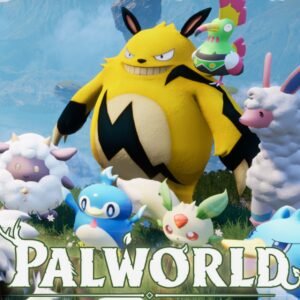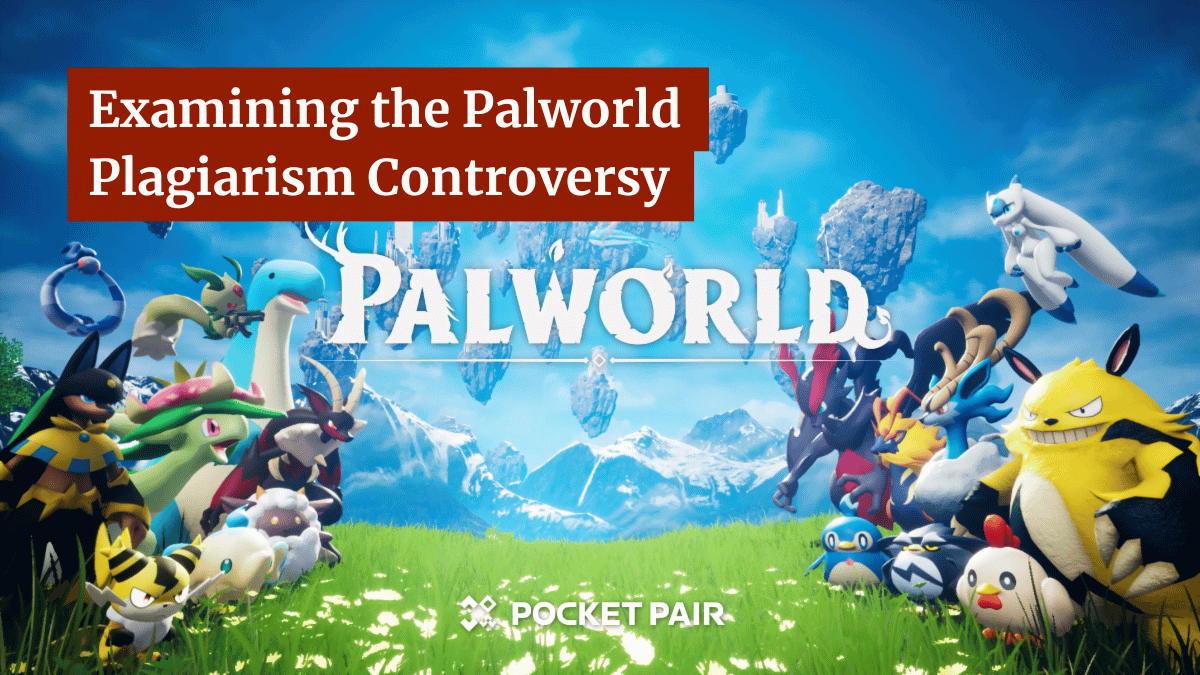Examining the Palworld Plagiarism Controversy

By most accounts, Palworld has become the breakout video game success of early 2024.
With over 5 million copies sold and over 1.5 million concurrent players on Steam alone, its blend of open-world survival and Pokémon-like creatures has brought a great deal of attention to both the game and the studio behind it, Pocketpair.
However, not all of that attention has been desirable.
According to a report in VGC, various users on X (formerly Twitter) began to notice similarities between the animal characters in Palworld and Pokémon. According to those allegations, the similarities went beyond mere inspiration and stepped into directly or indirectly copying work from Nintendo and The Pokémon Company.
One of the most vocal critics has been X user @byofrog, who posted a series of comparisons of models from Palworld against models from Pokémon games.
Those allegations have been further complicated by others accusing the company of using generative AI in developing the game.
Though there is no proof that the company has used AI (and the game is not labeled as such on Steam), the company does have a history in the space with an earlier game whose core mechanic centered on generative AI and the company’s CEO, Takuro Mizobe, has been very bullish on AI in the past.
Perhaps most damning was a December 2021 post by Mizobe highlighting AI-generated Pokémon-like creatures.
Though the allegations had been swirling for days, Mizobe posted a response yesterday, claiming that the company has been “receiving abusive and defamatory comments against our artists, in addition to tweets that appear to be death threats.”
Mizobe had previously highlighted that most of the game’s 100 character concepts were designed by a single graduate student who had previously applied to nearly 100 companies but had not been hired.
Despite the response, the allegations and the controversy have continued, but that raises a simple question: How serious are these allegations? The answer, unfortunately, is very gray.
An Uncertain Problem
Note: I am not an expert on plagiarism of 3D models and will be deferring heavily to other experts who have commented previously.
To be clear, the plagiarism allegations against the game appear to be far from proven. Even @byofrog acknowledges this in a post.
However, others are more convinced that at least some element of copying took place.
According to an anonymous character artist reported on by VGC, “You cannot, in any way, accidentally get the same proportions on multiple models from another game without ripping the models. Or at the very least, tracing them meticulously first.”
This was backed by another X user, @covingtown, who said that replicating proportions so closely across so many models “doesn’t pass the sniff test”
While most agree that the models are not exactly the same, they seem to believe that Palworld either traced or otherwise based their models on the Pokémon ones.
But the suspicion isn’t just about the similarities in the works. The game is a product of an inexperienced team, something that the company has proudly posted about, and the company’s connections with AI have both fanned the flames.
However, the game also has many noteworthy differences. For all the discussion about the models, the gameplay of Palworld is extremely different from Pokémon titles. From a gameplay standpoint, Palworld has more in common with games like Ark: Survival Evolved than Pokémon.
Widely labeled “Pokémon with guns”, the game has drawn criticism for allegedly promoting animal cruelty. However, that sits in sharp contrast to the more wholesome and family-friendly world of Pokémon.
All this puts the allegations, at least as of this writing, in a gray area. It exists in the space between plagiarism, homage, inspiration and parody all at the same time. This makes it difficult to pin down exactly what misdeeds, if any, the game is actually guilty of.
This is especially true considering that many of the accusers don’t feel that the case is proven, at least not at this stage.
This could present a large problem for both Nintendo and The Pokémon Company, who need to decide what, if any, action they should take.
The Legal Implications
While the discussion around alleged plagiarism is an important one, it’s ultimately an issue of ethics, not legality.
For both The Pokémon Company and Nintendo, the question is whether or not the similarities rise to the level of copyright infringement.
To be clear, both companies have a lengthy history of litigious behavior and neither have been bashful about filing lawsuits or taking other legal action against perceived infringers. If they feel a lawsuit is warranted, there’s little doubt that they will likely file it.
However, without clear evidence of copying from copyright-protected elements from Pokémon games, it is dubious whether a lawsuit would be practical or advisable.
The reason for this is simple. Though 3D models are protected by copyright, the allegations are more nuanced. Though the models are, in many cases, extremely similar, they are not identical.
The question then becomes whether these works are close enough and the similarities are clear enough to establish the new models as derivative works. That would be an issue that would have to be decided by a judge and/or jury and it could come down to facts and information that simply aren’t known at this time, such as what the exact process for designing the Palworld creatures was.
But even if it is a derivative work, there could be a fair use argument, in particular if the case were filed in the United States. Many already see Palworld as a parody of Pokémon, lampooning the family-friendly Nintendo creation by adding guns and other violent elements, often to the point of absurdity.
Though the recent Supreme Court decision in the Warhol case could complicate those arguments some, it is still something that would ultimately have to be hashed out in court.
To make matters more complicated, this is far from the only game to ape Pokémon in some way. As Don McGowan, the former legal head of The Pokémon company, put it in an interview with Game File, “This looks like the usual rip-off nonsense that I would see a thousand times a year when I was Chief Legal Officer of Pokémon.”
Clearly, Nintendo and The Pokémon Company need to pick their battles. In that regard, this may be one battle that simply isn’t worth taking up simply because, even if it is an infringement, it’s far from the most egregious or directly harmful.
Bottom Line
What makes Palworld a unique case is simply the fact that it is so successful. If you open up your app store or gaming store, you can likely find dozens of examples of games that are clearly trying to play off of Pokémon in one way or another.
However, Palworld has done something those games haven’t, become wildly successful. That success, by most accounts, is not owed to the Pokémon aesthetic, but to the unique gameplay that seems to have hooked players.
While this doesn’t excuse plagiarism or copyright infringement, it is, at this time, unclear whether Pocketpair has done either. Even the experts seem divided on what the evidence points to.
This is the kind of case that plays to the gray areas of both plagiarism and copyright. This means that the debate on both fronts will, most likely, continue for some time. However, it also makes it unlikely that we will see legal action without more clear evidence of wrongdoing.
Still, the popularity and divisive nature of the game means that the investigations and examinations will continue for some time to come. This could produce more evidence that would change the calculus drastically.
On that front, we just have to wait and see.
Want to Reuse or Republish this Content?
If you want to feature this article in your site, classroom or elsewhere, just let us know! We usually grant permission within 24 hours.
